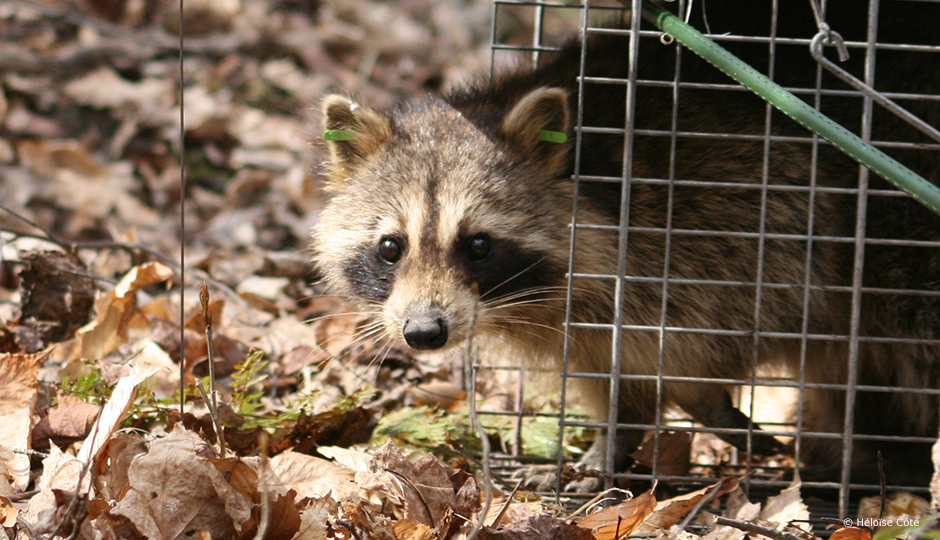The spread of raccoon rabies, a virus that is contagious and fatal to humans and animals, now appears to be under control in Québec: no cases have been recorded since 2008. Université de Sherbrooke animal ecology specialist Fanie Pelletier and her colleagues Dany Garant, from Université de Sherbrooke, and Daniel Fortin, from Université Laval, contributed to this success by providing new knowledge about the diminutive masked bandit.
By installing GPS collars around the necks of raccoons, the scientists were able to identify the animals' preferred habitats.
The researchers studied the behaviour and population structure of raccoons, the primary carrier of the disease. Their goal was to increase our understanding of the animals' movements, in order to help to better target the distribution of bait containing a rabies vaccine. The scientists verified whether major rivers actually limit the dispersal of the species, thereby limiting the spread of the virus. For example, the Richelieu River in Montérégie was considered to be a natural barrier to the spread of rabies, because all documented cases of the disease have been found on its east bank. However, on analyzing the genetic profiles of raccoons on both banks, the scientists found significant similarities between the two populations. Their conclusion: raccoons – and rabies – are able to cross the river! This result shows the importance of placing the anti-rabies biscuits on both sides of rivers.
Furthermore, by installing GPS collars around the necks of raccoons, the scientists were able to identify the animals' preferred habitats. We now know that it is more effective to concentrate the vaccine bait in woodlands and along the borders of agricultural land rather than spreading the biscuits across cornfields, which are less frequently visited by raccoons.




